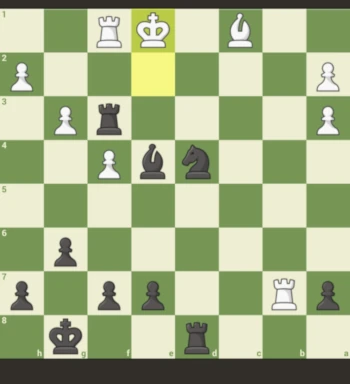
The Fool’s Mate
The Fool’s Mate is the fastest way to checkmate an opponent, and it can be achieved in just two moves. It is a trap that can be set for an unsuspecting opponent who moves their f-pawn two spaces on their second move, leaving their king vulnerable to attack by the queen.
The Fool’s Mate Reversed
The Fool’s Mate reversed is the same as the fool’s mate, but the opponent is the one playing the fool. This checkmate can also be achieved in just two moves and is a trap that can be set for an unsuspecting opponent who moves their e-pawn two spaces on their second move, leaving their king vulnerable to attack by the queen.
The Scholar’s Mate
The Scholar’s Mate is another fast checkmate that can be achieved in just four moves. It is a common trap that can be set for an opponent who moves their e-pawn two spaces on their second move, leaving their king vulnerable to attack by the queen and bishop.
The Two Knights Mate
The Two Knights Mate checkmate can be achieved in just four moves and is often used by advanced players. It involves sacrificing a knight to control the center and then attacking the opponent’s king with the second knight and other pieces.
The Smothered Mate
The Smothered Mate checkmate can be achieved in five moves and involves trapping the opponent’s king on the edge of the board with the queen and knight. The name “smothered” refers to the king being suffocated by its own pieces, unable to move and unable to escape the knight’s attack.
The key to executing the smothered mate is to create a position where the enemy king is surrounded by its own pieces and has no squares to move to. This can be achieved by advancing pawns to block the king’s escape squares or by moving the king to a corner of the board where it is surrounded by its own pieces.
Once the king is surrounded, a knight is moved to a square where it attacks the king. The knight’s attack is often supported by other pieces such as a queen or rook. The enemy king is unable to move and is checkmated.
Smothered Mate is a relatively rare occurrence in chess and is often seen in endgame positions, but can also occur in the middle game with the right positioning and tactics.
Back Rank Mate
Back Rank Mate is a checkmate that occurs when the enemy king is trapped on the back rank of the board by its own pawns and is attacked by a rook or queen. The name “back rank” refers to the rank of the board where the king starts the game, which is also the same rank as the pawns.
The key to executing the Back Rank Mate is to create a position where the enemy king is trapped on the back rank with its own pawns, and the rook or queen attacks it from the side. This can be achieved by advancing pawns to block the king’s escape squares, or by moving the king to the back rank, where it is surrounded by its own pawns.
Once the king is trapped on the back rank, the rook or queen is moved to a square where it attacks the king. The attack is often supported by other pieces such as a bishop or knight. The enemy king is unable to move and is checkmated.
Back Rank Mate is a relatively common occurrence in chess and can happen in both the opening and endgame phase, as it requires a specific pawn structure and a clear path for the attacking piece to checkmate the opponent’s king.